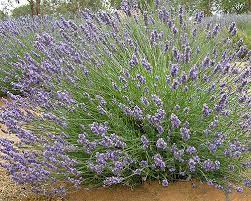Lavender, cherished for its fragrant blooms and versatile uses, is a staple in many gardens. Proper pruning is essential for maintaining the health, longevity, and beauty of this plant. Understanding when and how to prune lavender ensures abundant flowering and a thriving plant.
Why Pruning Lavender is Important
Pruning lavender is not just a routine task; it serves critical purposes:
- Encourages New Growth: Regular pruning stimulates fresh shoots, resulting in a fuller and bushier plant.
- Enhances Flowering: Pruning promotes more prolific blooming and extends the flowering season.
- Maintains Plant Health: Removing dead or diseased parts reduces the risk of mold, rot, and fungal infections.

When to Prune Lavender
The timing of lavender pruning depends on the plant variety and regional climate, but a general rule is to prune it twice a year: once lightly in spring and more thoroughly after flowering.
- Spring Pruning (March-April):
- Lightly prune lavender early in the growing season to remove dead or damaged branches caused by winter conditions.
- Trim about one-third of the plant’s height, taking care not to cut into the woody base.
- Post-Flowering Pruning (Late Spring to Early Summer):
- After the first bloom cycle, perform a deeper prune to encourage a second round of flowering.
- Cut back by about one-third, ensuring you trim just above the green growth while leaving a few inches of foliage intact.
How to Prune Lavender
Using proper techniques and tools is key to successful pruning and promoting plant health.
- Tools: Always use clean, sharp pruning shears or scissors to make precise cuts, preventing damage to the plant tissue.
- Trimming Technique: Cut above the leafy, green growth and avoid cutting into the woody stems, as excessive pruning of the woody base can hinder regrowth.
- Shaping: Prune lavender into a rounded shape for a neat, compact appearance.
- Deadheading: Remove spent flowers regularly to encourage new blooms and prevent the plant from diverting energy to seed production.
Additional Care Tips for Lavender
- Soil and Sunlight: Lavender thrives in well-draining soil and full sun. Plant it in a location with ample sunlight and avoid overwatering to prevent root rot.
- Winter Protection: In colder climates, safeguard lavender from frost by applying a layer of mulch. In spring, prune lightly to remove any frost-damaged growth.
- Observation: Different lavender varieties may have unique pruning needs. Observe your plant closely and adjust your care routine to suit its specific requirements.
By understanding the timing and techniques of pruning, you can keep your lavender healthy and vibrant, ensuring it remains a centerpiece of your garden for years. With proper care, your lavender will reward you with its beauty, fragrance, and abundance year after year.
This version keeps readers engaged while providing them with actionable, informative details.
